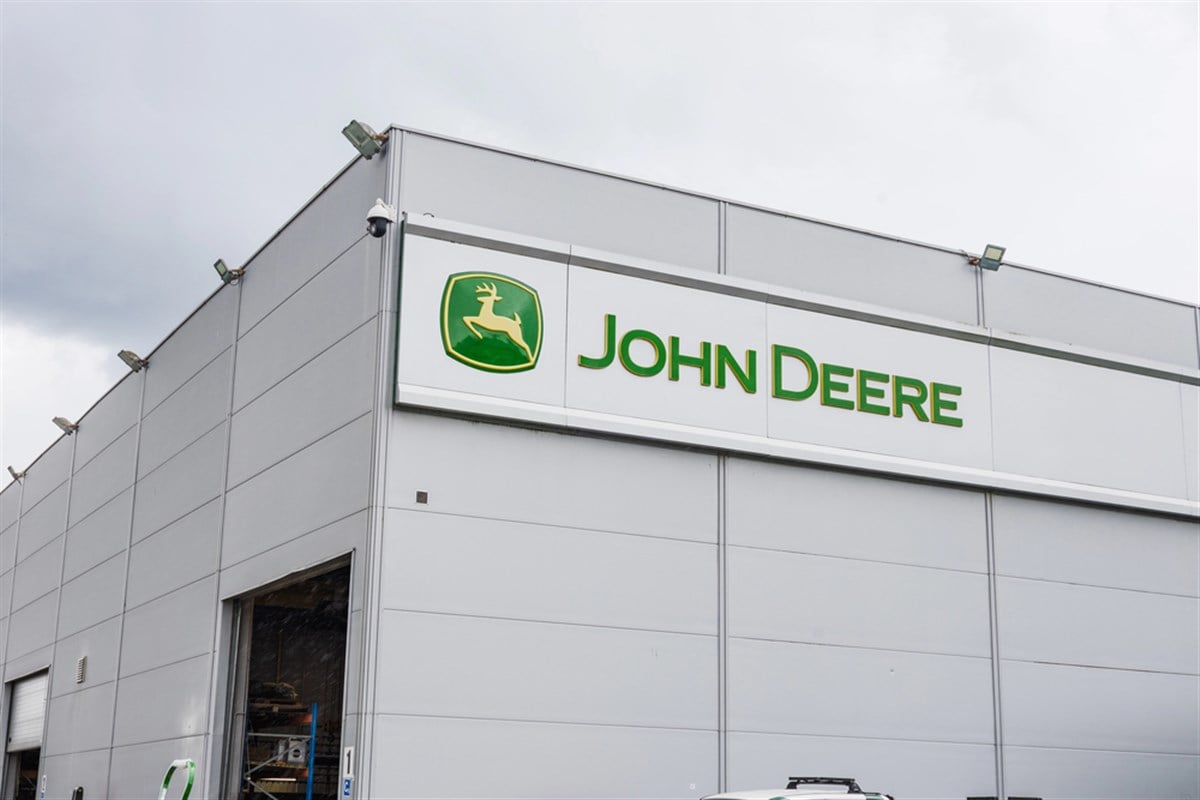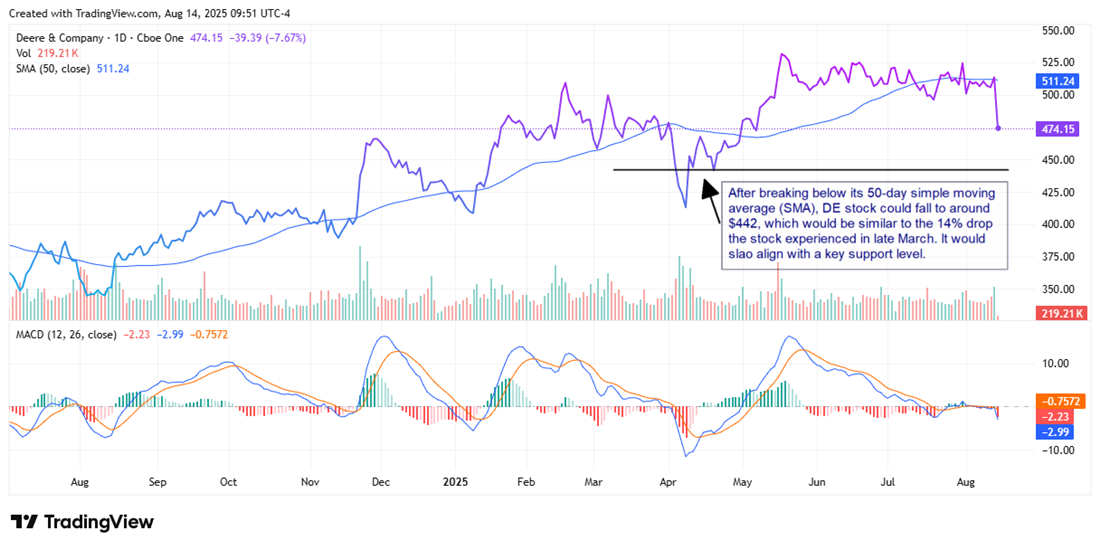 Bullish is the latest crypto-themed company to go public in 2025. But its diversified crypto products aimed at institutional investors make... ͏ ͏ ͏ ͏ ͏ ͏ ͏ ͏ ͏ ͏ ͏ ͏ ͏ ͏ ͏ ͏ ͏ ͏ ͏ ͏ ͏ ͏ ͏ ͏ ͏ ͏ ͏ ͏ ͏ ͏ ͏ ͏ ͏ ͏ ͏ ͏ ͏ ͏ ͏ ͏ ͏ ͏ ͏ ͏ ͏ ͏ ͏ ͏ ͏ ͏ ͏ ͏ ͏ ͏ ͏ ͏ ͏ ͏ ͏ ͏ ͏ ͏ ͏ ͏ ͏ ͏ ͏ ͏ ͏ ͏ ͏ ͏ ͏ ͏ ͏ ͏ ͏ ͏ ͏ ͏ ͏ ͏ ͏ ͏ ͏ ͏ ͏ ͏ ͏ ͏ ͏ ͏ ͏ ͏ ͏ ͏ ͏ ͏ ͏ ͏ |
| | Written by Jordan Chussler 
It’s been a good year for the financials sector. Between President Trump’s deregulatory platform and the anticipation of the Federal Reserve cutting interest rates at its September meeting, financials have put together a strong performance. Its 8.55% year-to-date gain ranks fifth among all 11 sectors of the S&P 500. But that corner of the market is no longer reserved for banks, asset management companies, or payment processors. The Trump administration has been equally bullish for crypto. Since Inauguration Day, Bitcoin (BTC) is up 20.10%, XRP (XRP) is up 44.05%, and Ethereum (ETH) is up 48.33%. And with the crypto industry no longer in its infancy, investors are now afforded opportunities to gain exposure beyond hot and cold wallets. From spot ETFs like the iShares Bitcoin Trust ETF (NASDAQ: IBIT) to publicly traded centralized exchanges like Coinbase (NASDAQ: COIN), crypto-themed investment vehicles are available via the traditional equities market. The latest opportunity came this week as Peter Thiel-backed Bullish (NYSE: BLSH) had its IPO on Aug. 6. The owner of CoinDesk will also provide a crypto exchange, serving as a competitor to Coinbase and Kraken (slated for its own IPO in 2026). When Bullish debuted at $37 on the NYSE on Wednesday morning, Aug. 13, shares reached $118 in intraday trading before settling with a single-day gain of 88.81% by the close, nearly doubling their IPO price tag. For speculative investors looking to add crypto exposure to their equity portfolios, it might be time to consider being bullish on Bullish. Why Peter Thiel’s Involvement Is a Big Deal While 2025 has seen other crypto-themed IPOs with mixed success, those companies haven’t had the hype or name recognition Bullish has. eToro (NASDAQ: ETOR) went public on May 14 to far less fanfare. The stock is down over 25% since. Two days later, Galaxy Digital (NASDAQ: GLXY) IPO’ed. The stock’s up 52% since, but insiders have vacated shares to the tune of $186.22 million versus $0 in insider buying. Ditto for Circle Internet Group (NYSE: CRCL), which went public on June 5. Circle’s up 42.21%, but insiders have offloaded $195.81 million versus $0 of insider buying. Of course, when companies have IPOs, early investors routinely cash in to take advantage of momentum and media attention. But what does Bullish bring to the table that those companies did not? The answer: Peter Thiel, cofounder of PayPal (NASDAQ: PYPL), who served as its CEO until the fintech startup was sold to eBay (NASDAQ: EBAY) for $1.5 billion in 2002. In 2003, Thiel co-founded this year’s hottest stock, Palantir (NASDAQ: PLTR). He served as its first chairman and continues to serve as a board member. He was also the first person to invest outside money in Facebook, and was an early investor in LinkedIn, Affirm (NASDAQ: AFRM), Airbnb (NASDAQ: ABNB), Asana (NYSE: ASAN), Lyft (NASDAQ: LYFT), Reddit (NYSE: RDDT), SoFi Technologies (NASDAQ: SOFI), SpaceX, Stripe, Yelp (NYSE: YELP), and Words with Friends creator Zynga among a dozen other startups. As of late, his attention has shifted to Bullish. After one failed attempt to go public in 2022 via an SPAC merger, Thiel sought to achieve a $4.82 billion valuation through Bullish’s now-successful 2025 IPO. How Bullish Differentiates Itself From Coinbase and Kraken Since the crypto platform’s launch in 2021, Bullish has surpassed $1.25 trillion in trading volume, with an average daily volume of $2.6 billion, with trading volume in Q1 increasing by 78% from the year-ago quarter. That daily volume is ahead of both Coinbase and Kraken. Bullish CEO Tom Farley is the former president of the NYSE, which may have contributed to the company’s focus on a particular breed of investor, as well as its listing on the NYSE rather than the NASDAQ. According to its SEC Form F-1 filing, Bullish is an "institutionally focused global digital asset platform focused on providing market infrastructure and information services…to provide mission-critical products and services that are designed to help institutions grow their businesses.” Coinbase and Kraken, both of which cater to retail investors, have carved their niches in the centralized crypto exchange industry. But with Bullish focusing on large institutional clients, it has emphasized a tailored platform offering derivatives, margin trading, and spot trading, as well as a focus on security and compliance. Based on its SEC filing, Bullish recorded adjusted EBITDA of $52 million and $13 million for the year ended Dec. 31, 2024, and for Q1 2025, respectively. Adjusted net income was $10 million and $2 million, respectively. Of course, flush with IPO cash, those numbers should rapidly expand in the years ahead. Speculative investors should take note.  Read This Story Online Read This Story Online |  Something big is brewing in Washington.
According to my research, an executive order from President Trump could be just weeks away.
And it holds the potential to trigger one of the most explosive tech booms in US history.
At the center of it all? Robots.
Not the kind that clean your house or pour you coffee.
But the kind that could reshape entire industries, add $1.2 trillion per year to the US economy, and affect 65 million American lives — just in the next year. This little-known company holds nearly 100 patents and trades for around $7 |
| Written by Jeffrey Neal Johnson 
Mercury Systems (NASDAQ: MRCY) delivered one of the market's most definitive earnings statements this week. The company's stock was up over 25% in a single session after the company reported strong fourth-quarter and full-year fiscal 2025 results. The rally was ignited by adjusted earnings per share (EPS) of 47 cents, which more than doubled the 21-cent analyst consensus and signaled a profound operational shift within the company. Investors' dramatic re-rating demands a closer look at the fundamental improvements driving Mercury Systems and whether it is now positioned to lead a new wave of growth in the critical aerospace and defense industry. How Record Results Forged a New Narrative Mercury System’s stock price performance was the direct result of tangible achievements in Mercury's core business. The company’s latest financial report provides a clear blueprint for a successful turnaround, built on strengthening demand and newfound operational discipline that flows directly to the bottom line. Building the Foundation: From Record Demand to Future Revenue A key forward-looking indicator for any business is its ability to secure future work, and Mercury delivered decisively on this front. The company reported a book-to-bill ratio of 1.25 for the quarter. For investors, this metric is crucial; a ratio above 1.0 indicates that demand is growing faster than current sales. A figure as strong as 1.25 suggests demand is accelerating, building a strong pipeline for future revenue. This surge in new orders culminated in a record-setting backlog of $1.40 billion, up 6% from the prior year. With a significant $807.8 million of this backlog expected to convert into revenue within the next 12 months, Mercury has established a stable and predictable foundation for growth, significantly reducing uncertainty for investors. The Bottom Line: Turning Growth Into Profit and Cash Perhaps the most compelling evidence of Mercury's turnaround lies in its profitability. The company reported a full-year adjusted EBITDA of $119.4 million, a monumental increase from just $9.4 million in fiscal 2024. This turnaround demonstrates that management’s strategic focus on efficiency and cost control is unlocking significant value. The fourth-quarter adjusted EBITDA margin hit 18.8%, a substantial improvement that shows the company is becoming more efficient at turning every dollar of revenue into profit. Just as important, this profitability is converting into real cash. Mercury generated a record $119.0 million in free cash flow for the year, a dramatic reversal from the $26.1 million generated in fiscal 2024. The company uses this cash to fortify its financial position by paying down debt to its lowest net level since 2022, giving it greater flexibility to fund future innovation and growth from its operations. Wall Street Follows the Fundamentals The market's enthusiastic response was amplified by a wave of endorsements from Mercury’s analyst community, who serve as a key third-party validator for the company's prospects. Following the earnings release, several investment firms swiftly raised their price targets for Mercury's stock. Raymond James led the charge, upgrading the stock to Strong Buy and increasing its price target to an ambitious $80 per share. Other key firms followed suit, with Truist Financial raising its target to $71 and Robert W. Baird raising it to $70. This broad-based support from market experts suggests a consensus view that the company's operational improvements are sustainable. In its report, Mercury's management provided initial guidance for low-single-digit revenue growth in fiscal 2026. While this may seem conservative after a strong year, it reflects prudent and strategic planning. This forecast accounts for two key factors: an approximate $30 million in revenue that was accelerated from 2026 into the recently reported quarter, and a deliberate plan to use factory capacity to complete older, lower-margin contracts. By clearing this legacy work, Mercury improves the overall health of its backlog and sets a credible (and likely beatable) performance bar for the year ahead. Momentum Built on Fundamentals Mercury Systems' recent stock performance was a market re-evaluation based on undeniable proof of a successful turnaround. The company has demonstrated an apparent ability to capture rising demand in the defense sector, evidenced by its record backlog. More importantly, its leadership team has proven it can translate that demand into remarkable profitability and cash flow. Mercury Systems has established a robust trajectory with a revitalized balance sheet and a clear strategy. For investors seeking growth backed by solid execution in the high-priority defense technology space, the company now presents a compelling and data-supported opportunity.  Read This Story Online Read This Story Online |  With inflation high, debt soaring, and global tensions rising, a financial storm may be brewing.
Economist Ben Stein—drawing on insights from his own experience and his father's time advising two U.S. presidents—just released a new report on how to help protect your retirement from the next major crisis. Claim your free copy of "How to Survive the Next Financial Crisis" today |
| Written by Chris Markoch 
Deere & Co. (NYSE: DE) stock is dropping sharply after it lowered its full-year guidance, citing tariff uncertainty, cautious customer spending, and weaker crop prices. The stock was down more than 8% in midday trading on Aug. 14 as investors continue to punish companies projecting a slowdown. Industrial stocks have been one of the market’s best-performing sectors. Before the earnings report, DE stock had been outperforming the Industrial Select Sector SPDR Fund (NYSEARCA: XLI), reflecting its status as a bellwether for the sector. The headline numbers beat expectations. Third-quarter revenue rose to $15.2 billion versus the $14.8 billion consensus, and earnings per share (EPS) came in at $10.02 versus $9.57 expected. But that wasn’t enough to offset the market’s reaction to guidance. Guidance Cut Hits All Segments John Deere forecasted weakness across all business units and regions for the rest of the year, and tariffs were a key reason. As a company with significant international exposure, it’s logical that it will be concerned about tariff impacts. Deere now expects reciprocal tariffs in Europe and India and higher steel costs to reduce pretax results by approximately $700 million, with about half of that impact hitting in the current quarter. Chief financial officer (CFO) Josh Jepsen told analysts, “We’ve incorporated higher steel costs and reciprocal tariffs into our guidance, which could weigh more heavily if trade tensions escalate.” The company is also contending with slower equipment demand. Jepsen said Deere has reduced large tractor inventories by 45%, small tractors by 30%, and earthmoving units by 25%-30%. However, he also noted that customers still opt for used equipment, creating headwinds for new equipment sales. Declining crop prices were a third factor contributing to the weaker guidance. Chief executive officer (CEO) John May noted that “corn, wheat, and soybean prices are at multi-year lows, which historically leads farmers to defer purchases of new equipment.” Cautious Guidance May Be Overstated Deere is known for issuing cautious forecasts, and management acknowledged that tariff and crop price impacts are based on assumptions that could change. This reminds investors that management is signaling what may happen, which may differ from what will happen. The guidance cut also came alongside broad market weakness triggered by hotter-than-expected inflation data. Jepsen emphasized that the company’s operational discipline remains intact: “Our structural improvements and cost controls position us well for when demand returns.” Deere’s reduced inventories could create a supply tailwind if end-market demand improves. That sets up the possibility for earnings to surprise to the upside later in the fiscal year. Does that mean the sell-off is overdone? That is not necessarily the case; selling momentum will likely stay with the bears in the short term. Analysts have not weighed in on DE stock at the time of this writing. An Attractive Valuation and Technical Outlook With around 23x earnings and 26x forward earnings, DE stock trades at a premium to its historical average. However, it’s not overvalued relative to the broader sector, and the chart suggests that patient investors may have an opportunity. The sell-off has pushed DE stock below its 50-day simple moving average (SMA), a level that had been providing support for several months. Could the stock drop more? Recent history suggests it can. In late March to early April, DE stock dropped approximately 14%. That slide started with the stock at about the level it is now. Plus, the MACD has crossed below its signal line, which suggests more downward momentum in the short term. 
A similar 14% drop would put the bottom near $442, aligning with a prior level of support. However, it’s important to note that DE stock rallied sharply after that point. The long-term buy-and-hold case for DE stock remains in place, which means a meaningful drop in the company’s stock price could present a buying opportunity.  Read This Story Online Read This Story Online |  |
| More Stories |
| |
|
|
0 Response to "🦉 The Night Owl Newsletter for August 14th"
Post a Comment